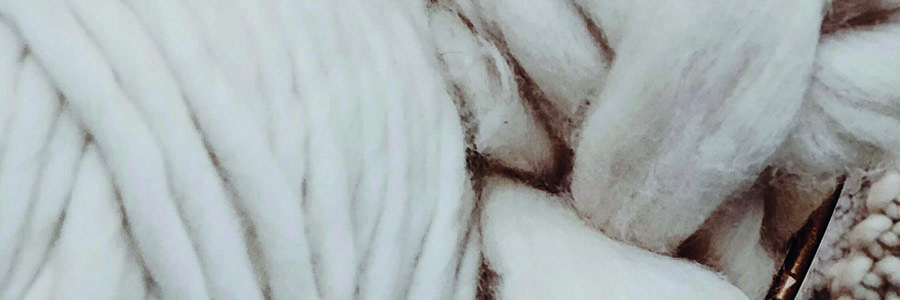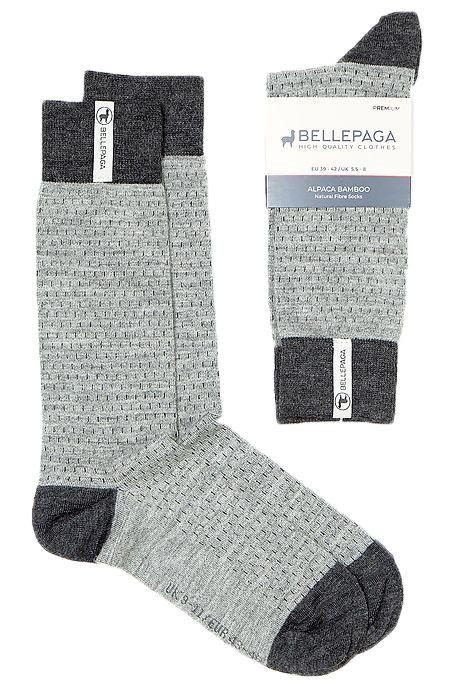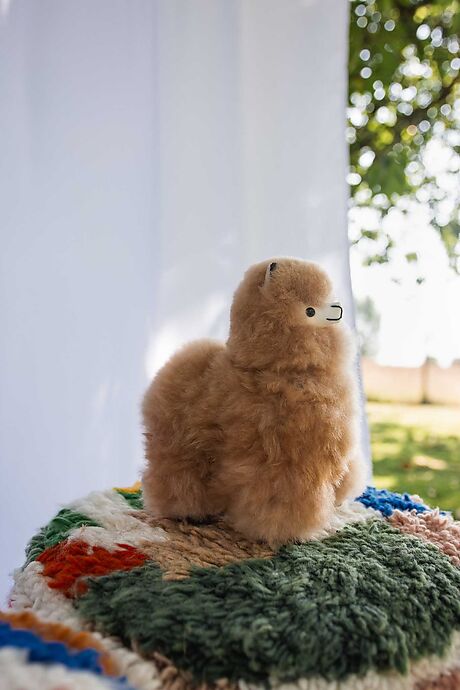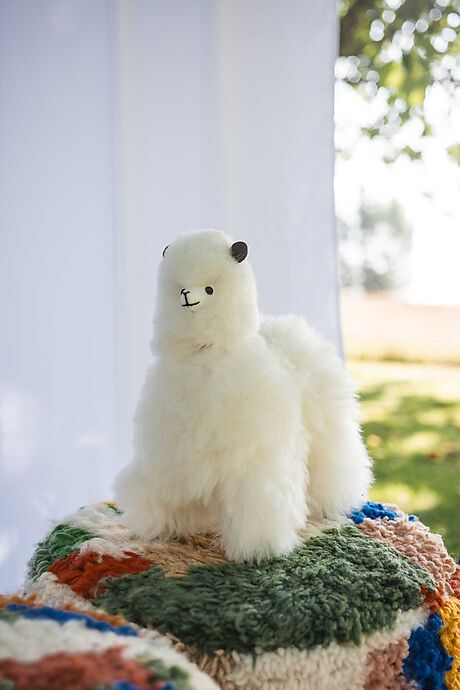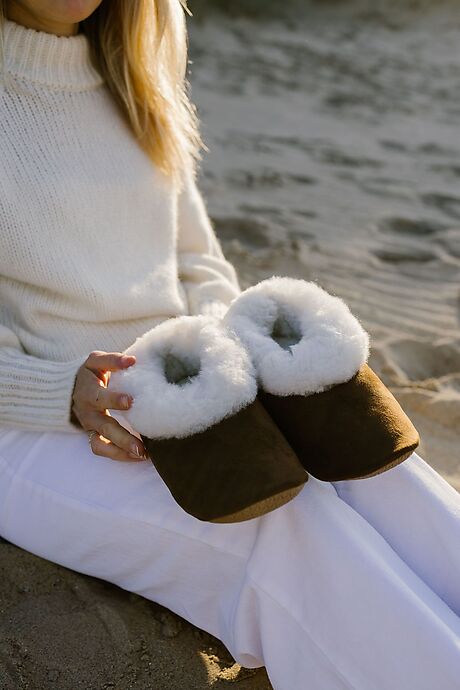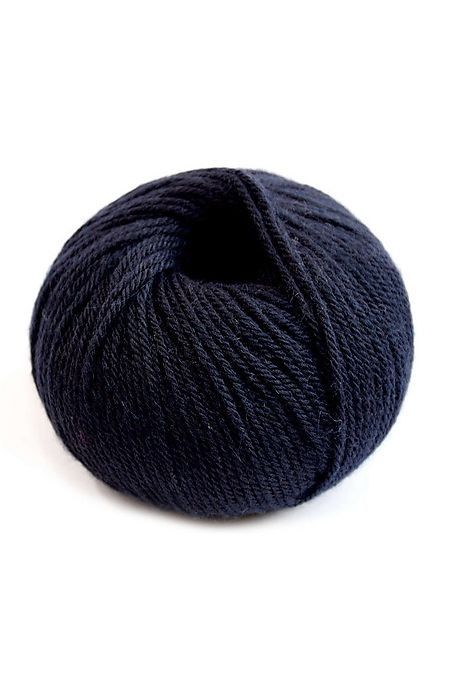Baby Alpaca
BellePaga has chosen, through its ready-to-wear brand, to promote alpaca, an animal that is not well known by the world at large. Each article is created from a noble and natural material: Baby Alpaca fibre. You can discover the benefits of these in various jumpers, scarves, plaids, socks, ... for men and women, as well as for the decoration of your home. But what is it? What are the advantages of this wool, which is still too little known? BellePaga tells you everything.
Baby alpaca wool
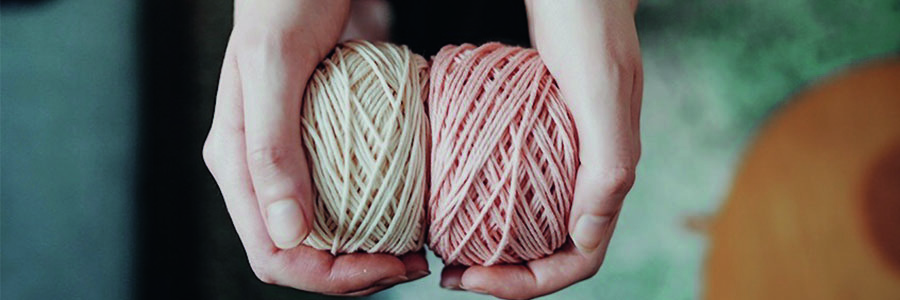
Contrary to what you may think, the term "Baby Alpaca" does not refer to the shearing of Alpaca babies.
Alpaca wool, also known as "wool of the gods", comes from adult camelids in South America. The fine hair of these animals is much sought after by humans. Alpaca fibre is internationally known and presented as the finest and most luxurious in the world. It has many virtues such as resistance (4 times more resistant than sheep's wool), softness, warmth (7 times warmer than sheep's wool), waterproofness and is a hypoallergenic fibre. It is therefore suitable for all skin types, even the most sensitive. The absence of lanolin in this wool prevents the appearance of redness, itching and irritation.
Fiber is measured in microns (fiber thickness). There are 5 categories of classification:
|
Thickness |
Name |
|
- 18 microns |
Royal baby Alpaga |
|
18 to 22 microns |
Baby Alpaga |
|
22,1 to 26,9 microns |
Fine Alpaga |
|
27 to 29,9 microns |
Medium Alpaga |
|
+ 18 microns |
Strong Alpaga |
Baby Alpaca therefore corresponds to the Alpaca fibre which is between 18 and 22 microns. It is a very fine fibre that represents the softest part of Alpaca's hair.
During the annual shearing, the Alpacas produce between 2.5 and 4.5kg of fibre which is then transformed by local producers into high quality clothing.
Baby Alpaca is often compared to silk for the softness and comfort of the fibres, but is silkier and warmer. It is soft and gives you a new experience of comfort. For these reasons we deal mainly with Baby Alpaca quality in order to offer a quality selection to our customers.
Baby Alpaca wool is an ecological and sustainable wool. Indeed, the alpaca is an animal with a low ecological footprint for several reasons. Firstly, it does not destroy the pastures on which it is found thanks to its lack of hooves, unlike the cashmere goat. Indeed, the Alpaca has pads on its legs that allow it to flatten the ground without ploughing it. Then, it can go several days without eating or drinking. It needs less to live and its waste can be used as natural fertilizer. When it grazes, the Alpaca does not pull out the root of the grass, which allows it to grow back faster and not damage the soil.
Finally, baby Alpaca wool naturally has a wide range of colours, from beige, to brown, to white and black, which means that chemical dyes can be limited or even eliminated. BellePaga is committed to not using chemical dyes and to favouring mineral dyes when the desired colour is not part of the natural colour range of the alpaca.
Did you know that?
Alpaca breeding in Peru is an ancestral tradition dating back more than 6000 years. During the Inca period, what was considered to be the most precious was neither the precious stones nor the gold with which the empire was covered but the alpaca wool fabrics! These were reserved for the noble and the Inca emperor. Their price was much higher than these jewels and owning an alpaca was synonymous with wealth and a symbol of power.
Care of baby alpaca
Baby alpaca wool garments are durable but still need to be cared for in a certain way. Dry cleaning or hand washing is recommended, between 10 and 20 degrees. It is also best to use a shampoo for delicate wools. Another advantage of baby Alpaca is that it does not give off any odour when it is wet, including when it is cleaned. Avoid the dryer at all costs and prefer to air dry, flat, without clothes pegs, so as not to stretch the fibres. Generally, baby alpaca wool does not wrinkle, so ironing is not necessary, but if you need to, it is best to put a cloth between your wool garment and the iron. Finally, try to space out your washes as much as possible so as not to put too much strain on the wool.
For more information, we have written a complete page on the care of alpaca wool.
By following these guidelines, your products will have a long life span of many years, making baby alpaca fibre a sustainable, ecological and economical choice.
Baby alpaca at BellePaga
BellePaga wanted the world to know the benefits of alpaca wool. Inherited from the culture of Peru and the Incas, this luxurious wool perfectly matches the values of our brand.
Discover the benefits of baby alpaca fibre through our men's, women's and home & decor products at BellePaga.com
-
Apocuna Scarf
-
Wira Premium Socks - Classic
- 35 - 38
- 39 - 42
- 43 - 46
-
Alpaca Soft Toy 23 cm - Guillermo
-
Alpaca Soft Toy 33 cm - Alberto
-
Suni Scarf
-
La Paz Slippers
- 35
- 36
- 37
- 38
- 39
- 40
- 41
- 42
- 43
- 44
- 45
- 34
- 46
- 47
-
Beanie Cari
-
Alpaca Yarn


